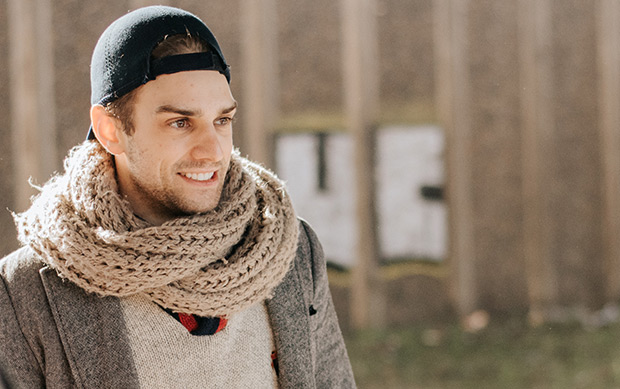
© Mihaela Bodlovic. (Click image for larger version)
www.instagram.com/mylesthatcher www.sfballet.org
Scottish Ballet’s Digital Season: 16 May – 16 June 2019
Myles Thatcher is a choreographer and dancer with San Francisco Ballet who’s created a stir there, and elsewhere in North America, for his different take on what ballet is and can be. Frontiers, part of Scottish Ballet’s Digital Season, is his first European commission and we wanted to know more…

© Mihaela Bodlovic. (Click image for larger version)
You have the tag of a ballet choreographer working in the queer space – what does that mean for what you produce and the ballet going audience?
In my opinion, there are a lot of vibrant and challenging questions that today’s generation is asking of society. I find it super exciting to embrace these questions in all aspects of my life, including my work. I have been known to incorporate a lot of these big questions in my choreography – body image, today’s political atmosphere, the gender binary – as I believe art should be a reflection of our times. Being a queer person myself, I’ve always been tuned in to how identity and gender interact with the world, and especially in an art form that has such strong roots in traditional gendered roles. Often as I am building dance, I try and find ways to challenge the conventions of how we use gender within ballet, whether it’s with specifically queer storytelling or something as simple as taking a look at my own tendencies of how I use gender in my choreographic process.

© Erik Tomasson. (Click image for larger version)
Tell us about Frontiers for Scottish Ballet’s Digital Season, how it came to be, what it is and what you hope people will take away from it?
Last year, I had worked on a project where I created a leading role that was danced by both a male and female dancer. It was such an interesting process to think about different ways to craft their choreography (especially with pas de deux work) and I really enjoyed the challenge. Although the audience never had the opportunity to see the two casts dance directly side by side, the imagery of seeing the different interpretations of the same exact steps and lifts in the studio, but danced with different gender pairings, was really striking to me. I thought creating a piece around this idea of building gender non-specific partnering work would not only be fun to create, but would make a beautiful statement on the ways today’s generation (and ballet as an art form) is thinking differently about accepting different identities. I know that some people have certain preconceptions of what ballet is and who it’s for, and I wanted to introduce a concept that might challenge those ideas and at the same time showcase the beautifully diverse, dynamic, and courageous group of dancers that make up the Scottish Ballet.
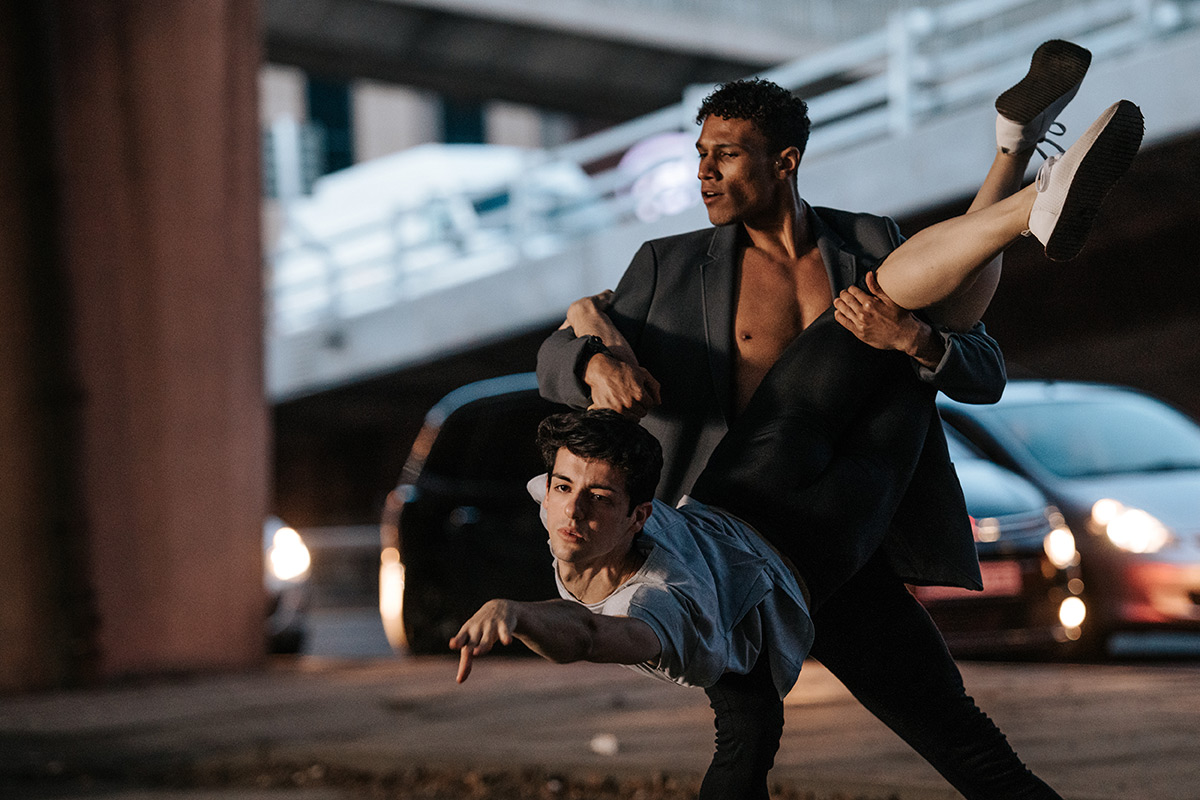
© Mihaela Bodlovic. (Click image for larger version)
What’s it been like working on film and with a director (Eve McConnachie) also in the creative mix?
Firstly, let me say how cool this idea of a “digital season” is. Accessibility in terms of ballet can be a struggle, and the idea that we can curate a season to be viewed on people’s screens is a really fascinating way to connect with new audiences. Film is a completely different medium than stage work. In my opinion, film will never replace the magic of the theatre, but I love the possibilities it opens of presenting dance in a completely different light.
Working with Eve was a dream. As I am no expert in film, it was amazing to be able to collaborate and learn from someone who knows the medium so well. We hit it off right away, and I feel like we took inspiration from each other’s ideas to create the film. One day, she took me on a walking tour through Glasgow of giant concrete underpasses and urban structures, and I knew that our aesthetics would gel well together. It is such a pleasure to work with someone you trust, and I feel grateful that I was able to work so closely with her.
If money and dancers were no object, what ginormous ballet or project would you like to do?
This is a tough one! There are plenty of projects I’d love to pursue. Personally, I want to be able to afford to collaborate with other sorts of artists, as well as develop some full-length story works. I also think there is plenty to play with in dance film and how we can start presenting dance in new spaces in tandem with film.
I am also super passionate about connecting our communities with ballet, so I’d like to develop ways to make ballet more accessible both financially and culturally. As much as I love to make work myself, I believe it is super important to have diverse artists creating diverse stories. I would love to supply endless resources to provide opportunities to uplift and showcase artists who don’t yet have a voice in the ballet community. What that looks like yet, I don’t quite know, but a guy can dream!
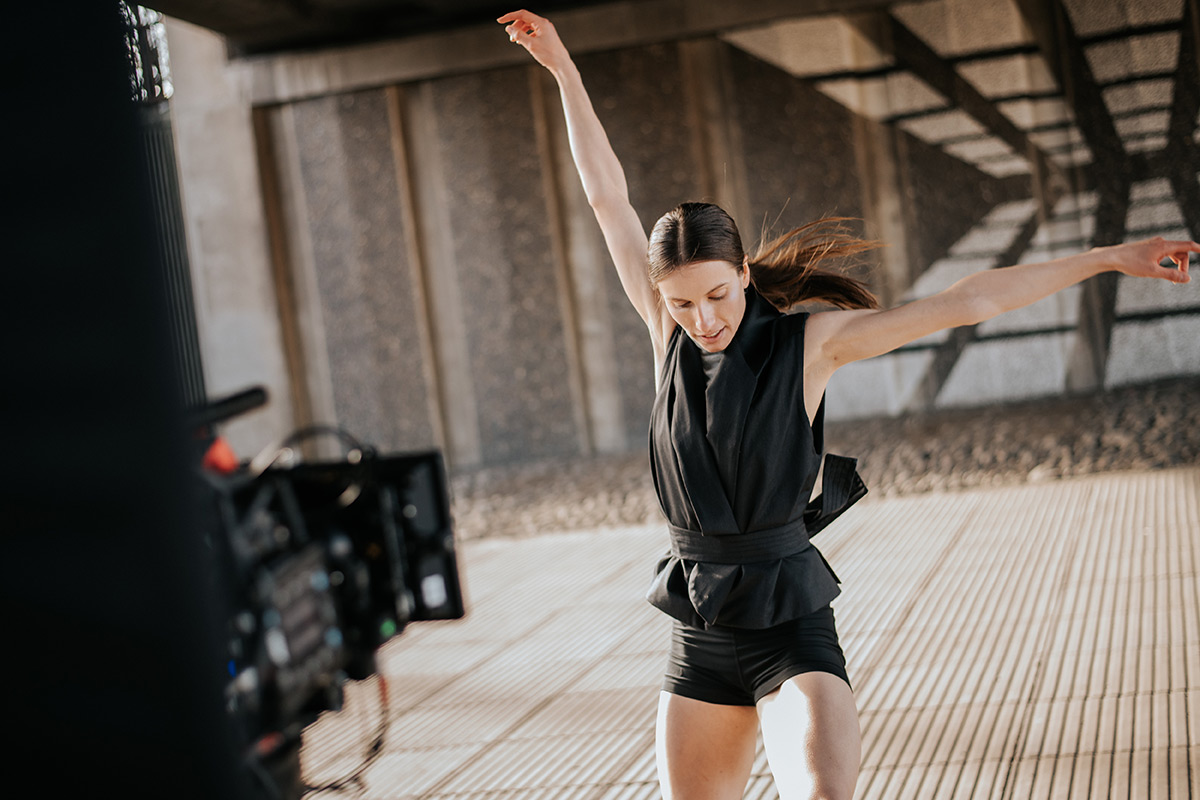
© Mihaela Bodlovic. (Click image for larger version)
Is ballet still special or should we all just talk about dance these days?
I’m a firm believer in pursuing things that one finds interesting, and for me, that has always included ballet. I also think we are in an age where the line between contemporary ballet works and modern dance is becoming increasingly blurry, which I actually find quite exciting. Creativity always lives in the spirit of experimentation and play, so I’m excited by all the ways people are utilizing classical technique to push the art form into new places. Ballet has evolved so much from the courts of Louis XIV, and it is amazing to see all the different ways it impacts the dance world. To answer your question, at the end of the day I think we should all be talking about what we find interesting, but to dismiss an art form that is still living in breathing in so many different ways would be a mistake.









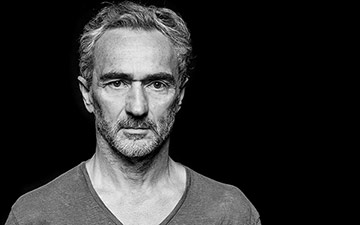

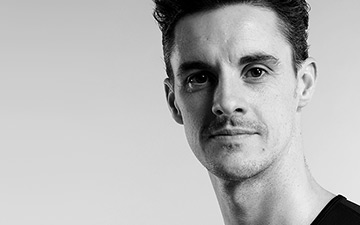
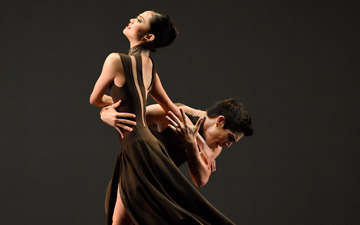
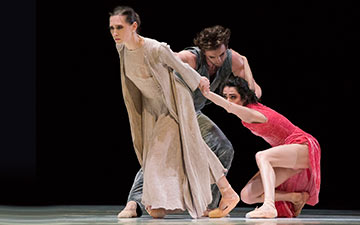


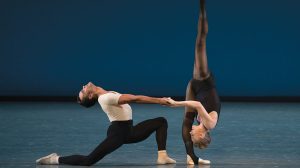
You must be logged in to post a comment.